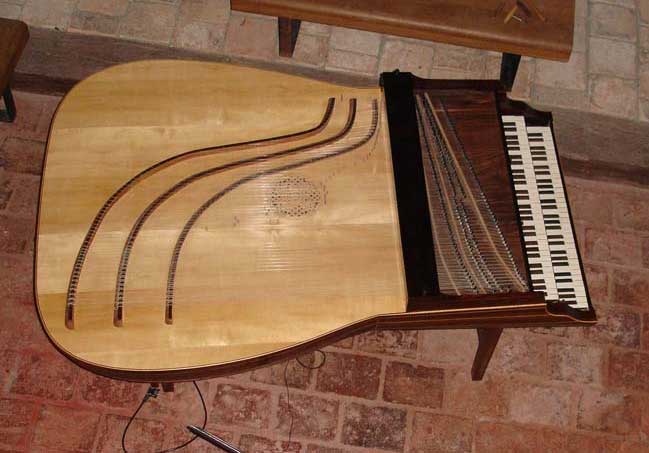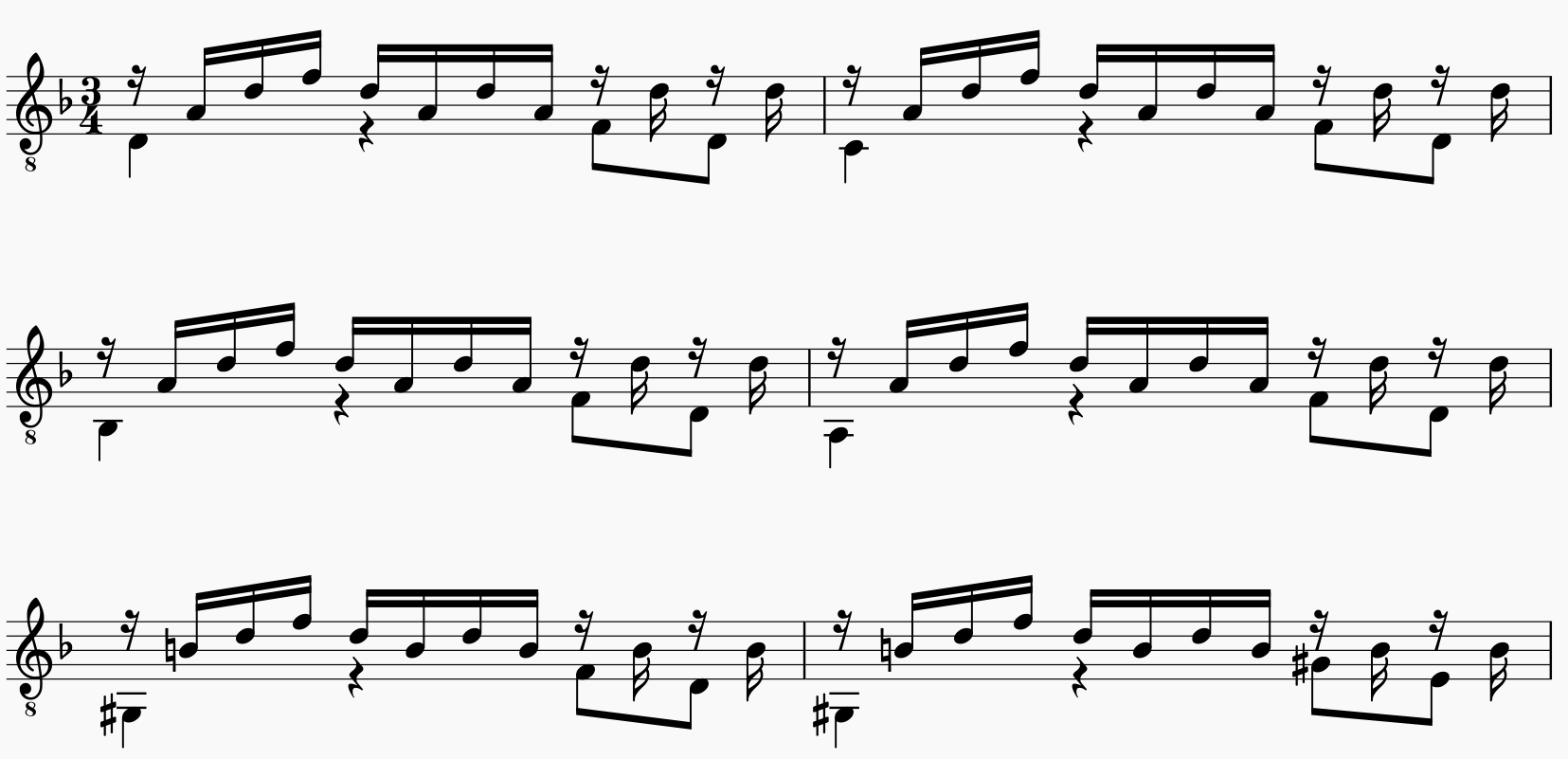
There’s so much to be learnt from Bach’s music. Every one of his pieces is like a masterclass in composition, filled with many wonderful and inventive devices that make his music so uniquely rich and interesting. Today we are going to be looking at just one of these compositional devices in particular.
So here it is: Bach often sets up a descending melodic sequence, which lands on an unexpected chromatic note.
So what exactly does this mean? Let’s examine this in more detail with an example. Bach uses this device quite a lot, but for now let’s just look at one piece in particular, his Prelude BWV 999. This was originally in C minor, written for a rather preposterous-looking (but beautiful sounding) instrument called the Lute Harpsichord (see below), but it is much better known in its modern incarnation for the guitar in D minor, so we’ll be looking at that version.

This whole piece is based around a repeating arpeggio pattern in 3/4. As you’ll be able to see from the excerpt below, the pattern goes up and down in a particular way, with specific notes changing within the pattern. Even if you can’t read music, the melodic pattern has a distinct shape to it that should give you a clue as to what it sounds like. Below we can see bars 7 to 12. The opening chord sequence of the piece establishes the tonality of D minor with a fairly typical I – IV – V chord pattern before arriving at this:

What we have here is a D minor arpeggio, with the last two quaver notes in the bass descending at the end of each bar, leading in to the first bass note in the next bar. In the first bar going in to the second, the notes in the bass go F – D and C. The same thing happens in the next bar, but it goes F – D and B flat. After that, it goes F – D and A. Can you see the pattern emerging here? The same thing keeps happening with the last note in the sequence descending diatonically (diatonic means to play within the key, which this is, as it is only using notes found in D minor).
Because the same thing keeps happening, the listener begins to expect what is going to happen next. The sequence keeps descending diatonically, and as we just hit the note A, we expect G natural, as that is in the key of D minor. But instead Bach throws us a curveball and what we actually get is an unexpected chromatic note, G sharp (chromatic means that it is outside of the key).
So what exactly is happening here? The G sharp is the major 3rd of an E dominant 7 flat 9 chord. Dominant 7 chords are commonly used to modulate (change key) by acting as a perfect cadence (a V – I chord progression) in to the new key. The flat 9, the F natural, is just added to the chord to add a little tension and make it more colourful. As E is the V chord of A minor, that is where we are modulating to. A is on the V or dominant position of the D scale. Modulation to the dominant is very common, as they share almost all of the same notes, so the key change doesn’t sound completely bizarre and unrelated. There’s actually only one note’s difference between D minor and A minor (the B is flat in D minor and natural in A minor).
Why does this musical device work? This works so well as a compositional device because it subverts the expectation of the listener, but it doesn’t subvert them too much. The G sharp in the sequence is unexpected because it is chromatic to the key of D minor, but it is not completely random and unrelated, as it is used to set up a key change to a closely connected key, A minor.
If your music changes in such completely unconnected and unexpected ways as to not be at all followable to the listener, it can make the music unsettling and difficult to listen to (unless that is deliberately what you are going for you should avoid it). On the other hand, if your music only does completely expected things that the listener can predict coming, that can become tedious and boring.
Music is best when it isn’t completely predictable, nor completely un-predictable. The listener needs to be able to follow your music, but not predict everywhere it is going to go. It’s always the pieces of music that add inventive things that you didn’t see coming that really grab your interest. If nothing in the music really stands out or does anything remotely unexpected, it won’t get anybody’s attention, it essentially just becomes background music. A descending melodic sequence which lands on an unexpected chromatic note is just one of many musical devices you can add to your mental ‘composer toolbox’, as I like to think of it.
Make sure you try this out next time you are composing!
If you enjoyed this lesson, make sure you check out our other blogs, and stay tuned for further lessons. If you’re serious about furthering your knowledge and your career in music, check out our Postgraduate and Premium courses on our website and see which ones are suitable for you. We’re always happy to help, so send us an email at contact@thinkspace.ac.uk with any questions and we’ll get back to you.

